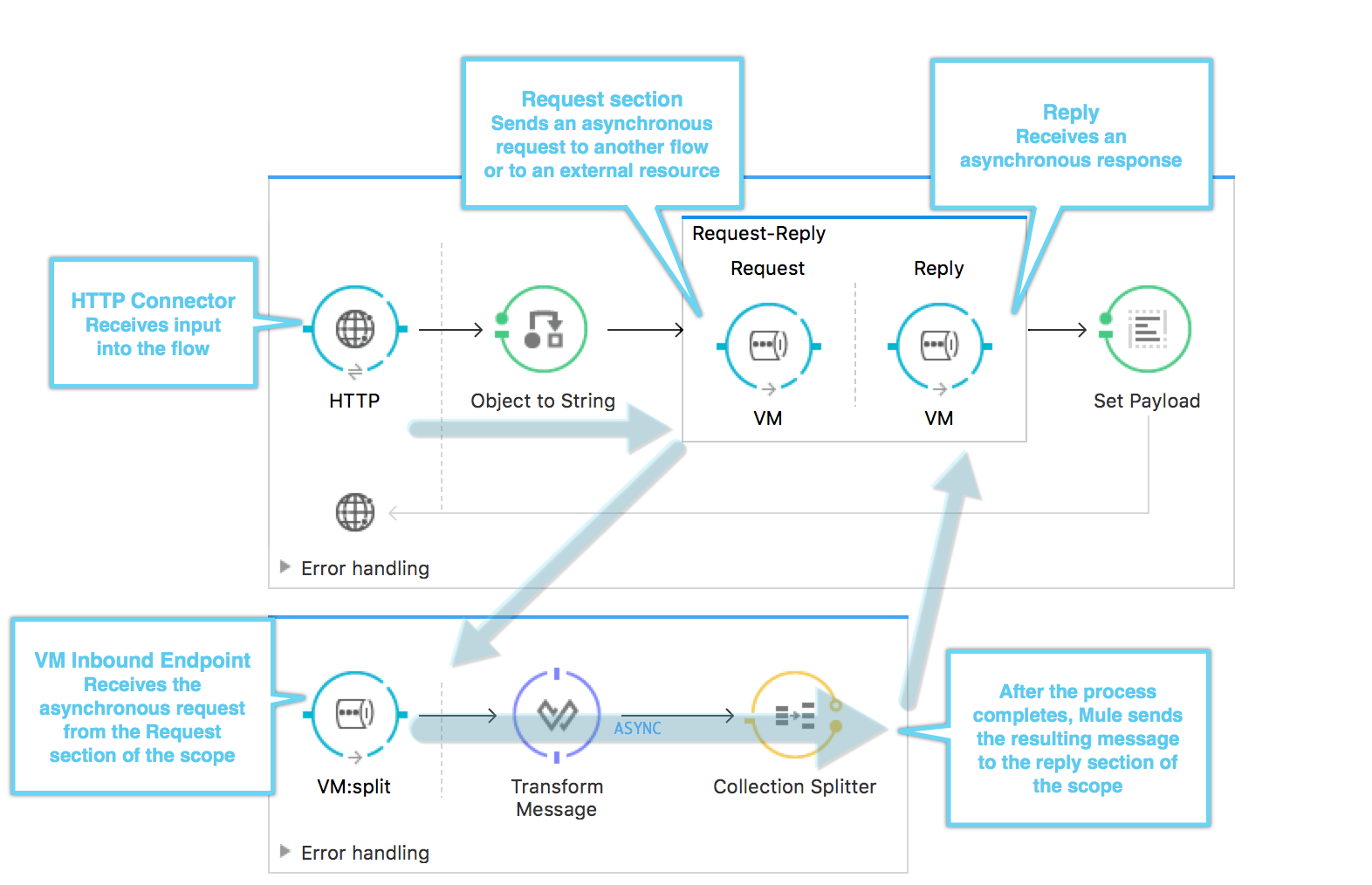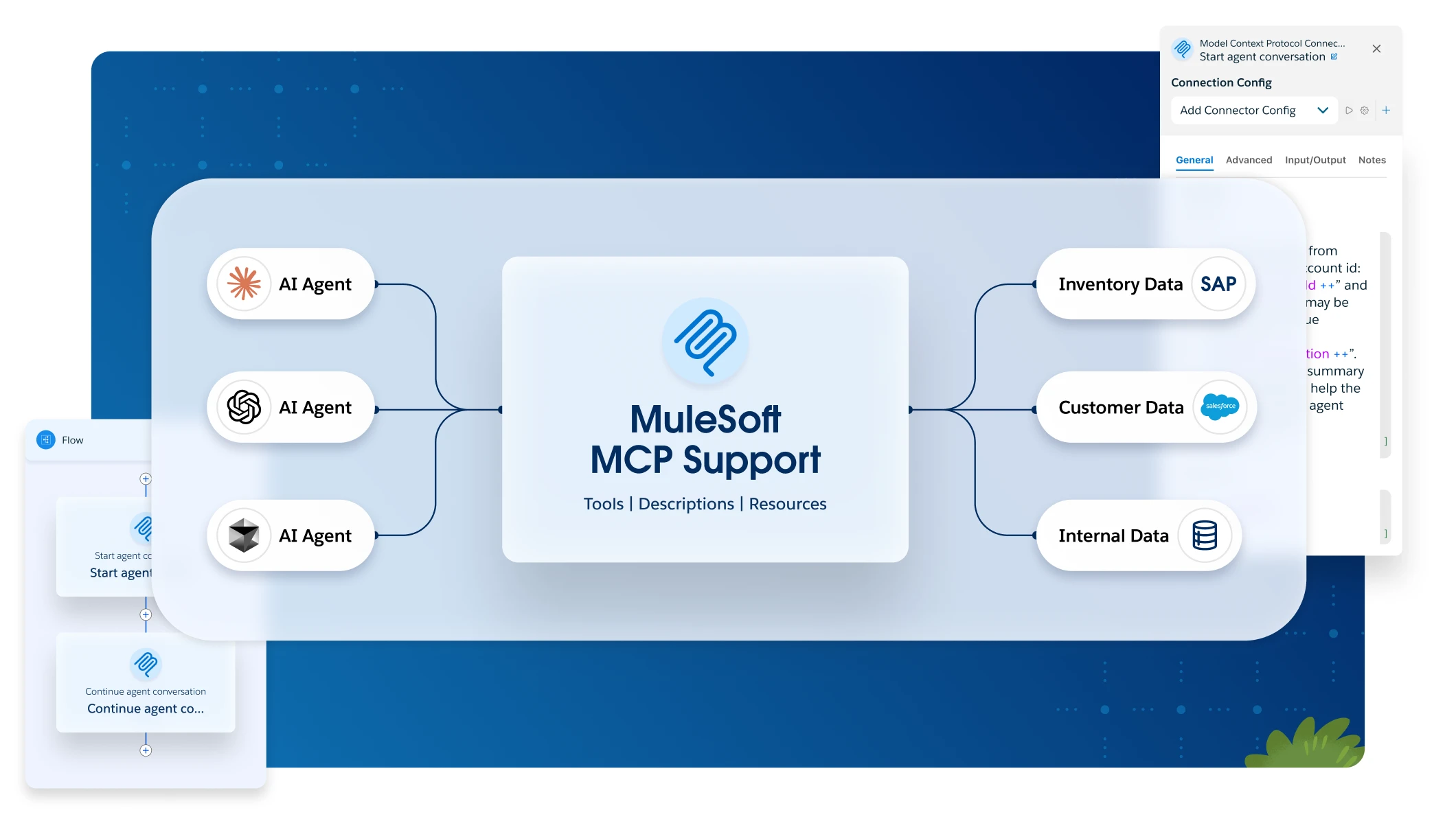
About the Request-Reply Scope
| Mule runtime engine version 3.8 reached its End of Life on November 16, 2021. For more information, contact your Customer Success Manager to determine how to migrate to the latest Mule version. |
The Request-Reply Scope enables you to embed a pocket of asynchronous processing within a Mule flow. This functionality enables you to receive a response from an asynchronous flow without hardcoding the destination of the response.
For example, you can use request-reply to convert a one-way VM or JMS connector flow to a request-response flow without having to change it’s configuration. In other words, the request-reply converts part of a synchronous process into an asynchronous one.
Basic Anatomy
Request-reply consists of two parts:
-
The request section.
It wraps an outbound connector that submits an asynchronous request to another flow or an external resource. -
The reply section.
It wraps an inbound connector that receives an asynchronous response from another flow or an external resource
When the message reaches the processor inside the request section of the Request-Reply scope, Mule sends an asynchronous request to the outbound endpoint’s path, triggering the process of the remote resource.
Only after that processing is complete, Mule sends the response back to the path defined in the processor’s inbound endpoint in the reply section of the scope.

Consider a very simple application:
<flow name="sampleFlow">
<http:listener config-ref="HTTP_Listener_Configuration" path="/"/>
<request-reply doc:name="Request-Reply">
<vm:outbound-endpoint exchange-pattern="one-way" path="request"/> (1)
<vm:inbound-endpoint exchange-pattern="one-way" path="reply" /> (3)
</request-reply>
</flow>
<flow name="requestFlow">
<vm:inbound-endpoint exchange-pattern="one-way" path="request"/> (2)
<logger message="#[payload]" level="INFO"/>
</flow>| 1 | After receiving an HTTP request, the VM outbound-endpoint processor sends the message to the /request path. |
| 2 | The VM inbound-endpoint processor with the /request path configured receives the message triggering the requestFlow processing. |
| 3 | Only after requestFlow finish processing, Mule automatically sends the message back to VM inbound-endpoint in the reply section of the Request-Reply scope. |
This is possible because Mule implicitly sets a MULE_REPLYTO message property to point to the processor in the reply section of the scope.
In this case, the VM inbound-endpoint processor in requestFlow’s source receives the message with the MULE_REPLYTO_REQUESTOR property set to "reply", so Mule sends the resulting message (or messages) back to the requester.
This is important to note because if the requested flow would have another VM outbound endpoint at the end pointing to a different flow, the VM processor inside the reply scope would still receive the message (or messages) from the triggered flow.
You can choose to disable this behavior by setting a MULE_REPLYTO variable:
<flow name="sampleFlow">
<http:listener config-ref="HTTP_Listener_Configuration" path="/"/>
<request-reply doc:name="Request-Reply">
<vm:outbound-endpoint exchange-pattern="one-way" path="request"/>
<vm:inbound-endpoint exchange-pattern="one-way" path="reply" />
</request-reply>
</flow>
<flow name="requestFlow">
<set-variable variableName="MULE_REPLYTO_STOP" value="true"/> (1)
<vm:inbound-endpoint exchange-pattern="one-way" path="request"/>
<logger message="#[payload]" level="INFO"/>
</flow>| 1 | Setting MULE_REPLYTO_STOP to true, tell Mule to not configure the MULE_REPLYTO_REQUESTOR property in the received message. |
| You can’t use transactions in VM and JMS connectors inside a request-reply scope. |
Transactions are not compatible with how the request-reply scope works.
The request-reply scope does not send a request until a transaction is committed, and a transaction in turn is not committed until the entire flow executes, including the execution of the request-reply scope. This leads to a situation where both processes block each other.
The runtime can’t fully execute the flow because it’s still waiting for the reply on the request-reply scope, but this reply never arrives because the request is not sent until the transaction is committed.



